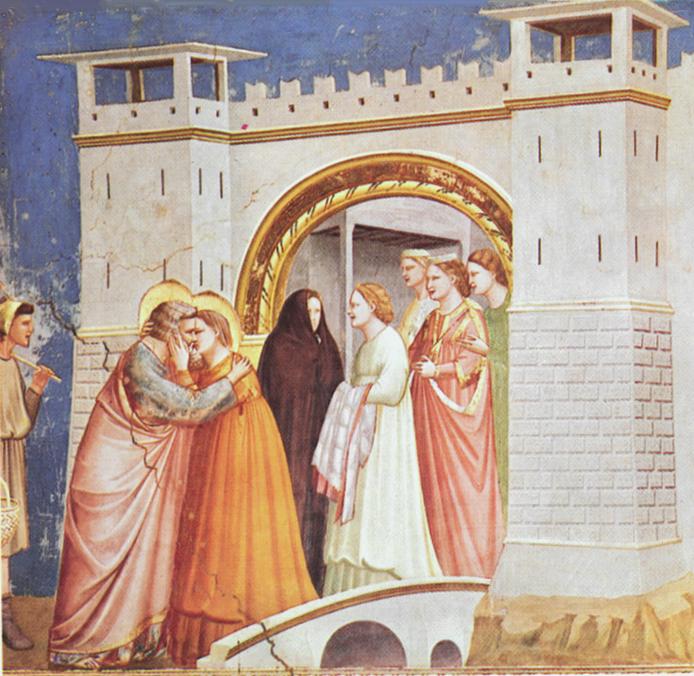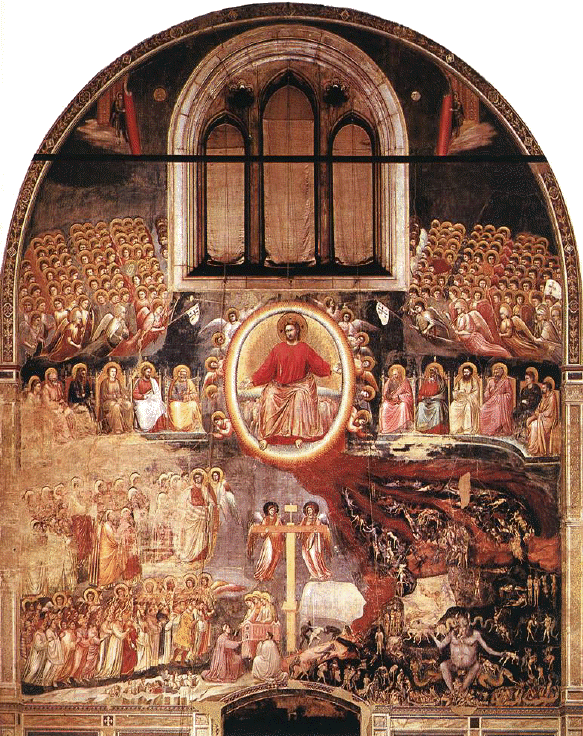
In the 1300’s, renowned Italian artists such as Giotto painted solid graceful figures, using tranquil pastel tones and a three-dimensional, balanced sense of light and space. A prime example is this panel in Padua’s Arena Chapel, entitled Anne and Joachim, the Virgin Mary’s parents, at the Gate.
However, immediately after the Black Plague of 1348, figures in Italian art began taking on a more wooden, Byzantine quality, seemingly to wipe out the sensitive artistic advances in shape and light made in the 14th century.
Yet, art historians such as Millard Meiss argue against the notion that these new batches of artists were simply poorer than their predecessors. The horror and death they saw around them profoundly affected painters such as Duccio (1250-1312), Barna da Siena, Orcagna and Traini. Their world was a colder place. Indeed, they saw friends and contemporaries such as writer Petrarch fall victim to the plague; many who witnessed this dark period in history were left with survivor’s guilt
